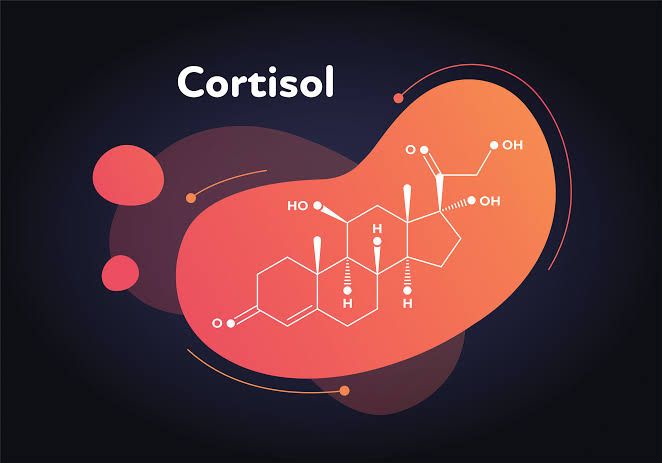
Major Physiological Effects of Glucocorticoids
Glucocorticoids, such as cortisol, are steroid hormones synthesized and secreted by the adrenal glands. They play a critical role in maintaining homeostasis and responding to stress. Their major physiological effects include:
- Anti-inflammatory Actions:
Glucocorticoids suppress inflammation by inhibiting the production of pro-inflammatory cytokines and chemokines. They also reduce immune cell infiltration into tissues and promote the death of certain immune cells, such as T-cells, when necessary. Additionally, they activate scavenger immune cells to clear debris and facilitate tissue repair.
- Metabolic Regulation:
Glucocorticoids regulate metabolism in multiple tissues:- In the liver, they promote gluconeogenesis (the production of glucose from non-carbohydrate sources) and glycogen storage.
- In muscle, they enhance protein catabolism to provide amino acids for gluconeogenesis.
- In adipose tissue, glucocorticoids stimulate lipolysis (fat breakdown) but can also lead to fat redistribution, contributing to central adiposity in cases of prolonged exposure.
- Effects on Vascular Tone:
Glucocorticoids help maintain vascular tone by sensitizing blood vessels to vasoconstrictors like norepinephrine and angiotensin II. This is crucial for maintaining blood pressure during stress.
- Influence on Mood, Behavior, and Sleep-Wake Cycles:
In the brain, glucocorticoids influence mood regulation, behavior, and circadian rhythms. Dysregulation can lead to conditions such as depression or insomnia.
- Bone Health:
Chronic exposure to elevated glucocorticoid levels can impair bone formation by inhibiting osteoblast activity while promoting bone resorption through osteoclast activation, potentially leading to osteoporosis.
- Immune System Priming During Acute Stress:
Paradoxically, while glucocorticoids are immunosuppressive during chronic stress or disease states, they also “prime” the immune system during acute stress by enhancing immune cell activation and improving pathogen detection.
Regulation of Cortisol Secretion
Cortisol secretion is tightly regulated by the hypothalamic-pituitary-adrenal (HPA) axis through a feedback loop:
- Initiation via CRH Release:
The hypothalamus releases corticotrophin-releasing hormone (CRH) in response to stress or circadian signals.
- ACTH Stimulation from the Pituitary Gland:
CRH stimulates the anterior pituitary gland to secrete adrenocorticotropic hormone (ACTH), which travels through the bloodstream to act on the adrenal cortex.
- Cortisol Production in Adrenal Cortex:
ACTH binds receptors in the adrenal cortex, triggering cortisol synthesis and release into circulation.
- Negative Feedback Mechanism:
Elevated cortisol levels inhibit further secretion of CRH from the hypothalamus and ACTH from the pituitary gland through negative feedback loops.
- Pulsatile Secretion with Diurnal Rhythm:
Cortisol is secreted in a pulsatile manner with a distinct diurnal rhythm—levels peak early in the morning upon waking (to prepare for daily challenges) and decline throughout the day. Additional pulses occur during acute stress events.
Clinical Consequences of Hypoadrenalism and Hyperadrenalism
1. Hypoadrenalism
Hypoadrenalism refers to insufficient production of adrenal hormones like cortisol due to primary or secondary causes:
- Primary Hypoadrenalism (Addison’s Disease):
- Caused by autoimmune destruction of adrenal glands or infections like tuberculosis.
- Symptoms include fatigue, weight loss, hypotension (low blood pressure), hyperpigmentation due to excess ACTH stimulation of melanocytes, hypoglycemia (low blood sugar), nausea/vomiting, and electrolyte imbalances such as hyponatremia (low sodium) and hyperkalemia (high potassium).
- If untreated, it may result in an adrenal crisis—a life-threatening condition characterized by severe hypotension and shock.
- Secondary Hypoadrenalism:
- Results from reduced ACTH secretion due to pituitary dysfunction.
- Similar symptoms occur but without hyperpigmentation or significant electrolyte imbalances because aldosterone secretion remains intact.
2. Hyperadrenalism
Hyperadrenalism involves excessive production of cortisol or other adrenal hormones:
- Cushing’s Syndrome:
- Caused by prolonged exposure to high cortisol levels due to endogenous overproduction (e.g., pituitary adenomas secreting ACTH) or exogenous glucocorticoid use.
- Symptoms include central obesity with thin extremities (“moon face” appearance), muscle weakness/atrophy, osteoporosis, hypertension (high blood pressure), insulin resistance leading to diabetes mellitus, skin thinning with easy bruising/stretch marks (striae), depression/anxiety disorders, and impaired wound healing.
- Chronic suppression of immune function increases susceptibility to infections.
- Hypertension Due to Mineralocorticoid Effects:
- Excessive glucocorticoid activity can mimic mineralocorticoid effects on sodium retention in kidneys leading to fluid retention and hypertension.
Both hypo- and hyperadrenal states require careful diagnosis using clinical evaluation combined with laboratory tests measuring serum cortisol levels at specific times or after stimulation/suppression tests.







